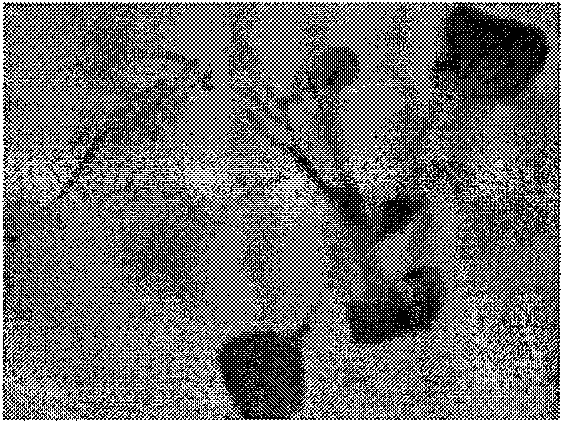Method for cultivating transgenic plant
A transgenic plant, plant technology, applied in the fields of botany equipment and methods, biochemical equipment and methods, genetic engineering, etc., can solve problems such as limited salt tolerance, and achieve the effect of improving the possibility
- Summary
- Abstract
- Description
- Claims
- Application Information
AI Technical Summary
Problems solved by technology
Method used
Image
Examples
Embodiment 1
[0018] Embodiment 1, Agrobacterium-mediated Arabidopsis transformation
[0019] 1) Construction of the binary bacterial artificial chromosome library of Thellungiella halophila
[0020] Extract the total DNA of the aerial part of the small salt mustard grown for 20 days, incompletely digest the total DNA with the restriction endonuclease BamHI, analyze by pulse gel electrophoresis, and extract the DNA fragments with a molecular weight between 50-100kb from the gel The recovered DNA fragments were combined with the plant dual-source expression vector BIBAC2 (Hamilton CM, Frary A, Lewis C, Tanksley, S D (1996) Stable transfer of intact high molecular weight DNA into plant chromosomes. Proc Natl AcadSci US A. 93:9975-9) for the ligation reaction. The ligation product was transformed into Escherichia coli DH10B by electroporation for library amplification. The conversion efficiency of 1 microliter ligation product is 1×10 5 BAC clones, the entire library consisted of 23,040 clo...
PUM
 Login to View More
Login to View More Abstract
Description
Claims
Application Information
 Login to View More
Login to View More - R&D
- Intellectual Property
- Life Sciences
- Materials
- Tech Scout
- Unparalleled Data Quality
- Higher Quality Content
- 60% Fewer Hallucinations
Browse by: Latest US Patents, China's latest patents, Technical Efficacy Thesaurus, Application Domain, Technology Topic, Popular Technical Reports.
© 2025 PatSnap. All rights reserved.Legal|Privacy policy|Modern Slavery Act Transparency Statement|Sitemap|About US| Contact US: help@patsnap.com



